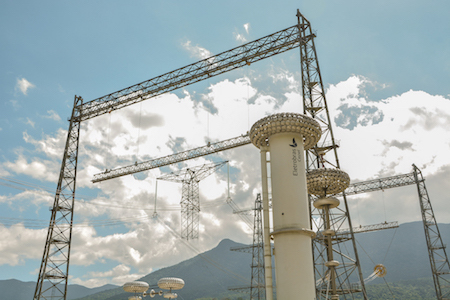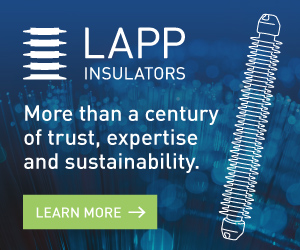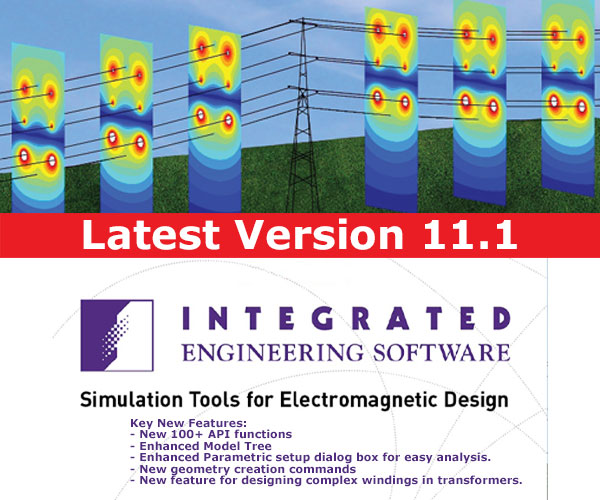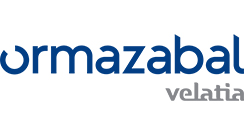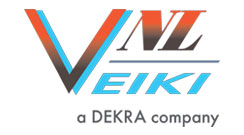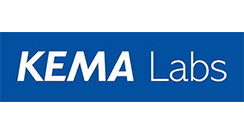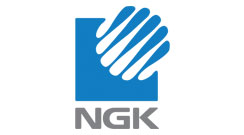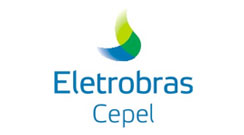
Cepel – Electrical Energy Research Center
+55 21 2666 6273 +55 21 2667 3079 cepel@cepel.br Visit website
Avenida Olinda, 5800 – Adrianópolis
Nova Iguaçu, RJ, 21053-060
Brazil
Overview
High Voltage & High Power LAB.
Avenida Olinda, 5800 – Adrianópolis, Nova Iguaçu, RJ, 21053-060
BRAZIL
Material & Mechatronic Lab Energy Efficiency Lab.
Avenida Horácio Macedo, 354 – Cidade Universitária, Rio de Janeiro, RJ, 21941-911
BRAZIL
Key Contact:
Cepel Laboratory & Technological Services
E-mail Address: labcepel@cepel.br
Phone: + 55 21 25986004
Cepel Business and Innovation Department
E-mail Address: dni@cepel.br
Phone: + 55 21 25986070
Mailing Address:
Caixa Postal 68007, Cidade Universitária, Rio de Janeiro, RJ,
ZIP CODE: 21944-970
BRAZIL
Year Founded 1974
HV Lab: 1979
HP Lab: 1981
Total Number of Employees: 63
Major Export Markets Served: Electric Utility and Manufacturers in South America
Services
High Voltage Laboratory
Number of Employees in High Voltage Laboratory: 14
Dimension of Main Test Hall: 44 x 30 x 27 m (LWH)
Dimension of Secondary Test Hall: 10 x 10 x 8 m (LWH)
Dielectric Testing Facilities
| Impulse Testing | Max. Volt./Current | Standard/Remarks |
| Lightning Impulse | 3200 kV | IEC, ANSI, ABNT |
| Switching Impulse (Dry) | 2800 kV | IEC, ANSI, ABNT |
| Switching Impulse (Wet) | 2400 kV | IEC, ANSI, ABNT |
| Current Impulse | 100 kA | IEC, ANSI, ABNT |
| Other Tests | ||
| AC Stress: (Dry/Wet) | 1100 kV / 2A | IEC, ANSI, ABNT |
| DC Stress: (Dry/Wet) | ±1000 kV / 2A | IEC, ANSI, ABNT |
| PD & RIV Testing: | 1100 kV | IEC, ANSI, ABNT |
| C & Tan ∂ Measurements: | 1100 kV / 2A | IEC, ANSI, ABNT |
Pollution Testing
Dimensions of Main Test Chamber: 18 x 16 x 20 m (LWH)
| Standard | Max.A.C. Volt | Max.D.C. Volt | |
| Salt Fog | IEC/ANSI/ABNT | 600 kV / 2A | ±600 kV |
| Clean Fog | IEC/ANSI/ABNT | 600 kV / 2A | ±600 kV |
Other Tests Performed on Insulators, Arresters
Puncture test on insulators; voltage distribution on insulator strings; visual and UV corona; bias test on HV disconnectors and circuit breakers; thermal stability on capacitors; fast chopped impulse testing on SF6, OIP and RIP bushings. Measurements, monitoring and diagnostics of substation and transmission line
equipment.
High Power Laboratory
Total Number of Employees in High Power Laboratory: 13
Kind of Power Source for the HP Laboratory: Three single-phase power transformers 138 kV ±/±(4,122-33,482) V in 26 steps, rated 11 MVA (continuously) and 350 MVA (1.0 second)
Specifications of the Main Test Bay
• Power Frequency: 60 Hz
• Max. MVA: 1,050
• Max. kV: 100 kV (1-phase) or 60 kV (3-phase)
• Max. kA & Duration: 100 kA, 0.2 sec.
High Current Test Facilities & Capabilities: Three single-phase power
transformer 138 kV / 4,16 kV ±20% followed by another bank with three single- phase power transformers 4,16 kV / 110-4,122 V; all transformers have a power of 8 MVA continuously and 40 MVA for 5 seconds.
Power Tests:
• (i) Making and breaking of short-circuit current on circuit breakers, expulsion and current limiting fuses, automatic circuit reclosers, earthing switches, high voltage contactors and other equipment, in the range of 4.5 kV to 100 kV (single-phase) or 4.5 kV to 60 kV (three-phase) with power up to 750 MVA;
• (ii) Power arc tests on insulator strings for transmission lines; internal arc tests on metal enclosed switchgear and control gear; pressure relief tests on surge arresters
• (iii) Short circuit tests on distribution and power transformers and potential transformers
• (iv) Short time withstand current tests on reactors, current transformers, metal enclosed switchgear and control gear, ducts, cables, transmission line space-dumpers and other equipment.
Heat Run Tests:
Temperature rise tests on switchgear and control gear assemblies, ducts, disconnectors, or any other low and high voltage equipment, test current up to 50 kA continuously.
Other High-Power Tests
Making and breaking of short circuit current on breakers, fuses, switches, contactors and other equipment, in the range of 110 V to 3500 V (3-phase) or 110 V to 6000 V (1-phase) with power up to 120 MVA; short-time withstand current on current transformers, reactors, switchgear and control gear assemblies, disconnectors and earthing switches, cables and other equipment; maximum current of 230 kA; Lightning DC current effects on optical ground wires (OPGW).
Other Testing Facilities
Ultra High Voltage Laboratory: UHV outdoor laboratory for testing AC and DC transmission lines and electrical equipment and accessories for systems up to 1200kV AC and ±1000 kV DC with the following capabilities: Three single-phase 750 kV 60 Hz Voltage transformers for three-phase tests and 2.25 MV AC 60Hz for single–phase tests. DC sources up to ±1.600 kV, Impulse generator for lightning and switching impulse up to 6.4 MV and combined tests.
Environmental Tests: Chamber tests: Salt spray, wet and SO2, UV Fluorescent Test.
High Voltage Calibration: Accredited Laboratory for calibrating High Voltage measuring systems up to 2,5 MV for AC, DC and Voltage and Current Impulses. Calibration is performed according to IEC 60060-2 and IEC 61083.
Smart Grid Laboratory: Facility for experimental research and testing of quasi-stationary and dynamic characteristics of the interface between DER (Distributed Energy Resources) and the power grid. It comprises photovoltaic (PV) systems, storage systems with batteries, highly dynamic AC and DC programmable power sources, real-time digital simulator, smart power inverters, on-line programmable loads, multi-tap transformers, wind turbine emulators and communication/ measurement/ control systems. It is divided in three applications areas:
• Power hardware-in-the-loop test bench
• Low voltage (LV) microgrid
• Component testing (power devices, communication devices)
Material and Mechatronic Laboratory:
Dedicated to materials research at Cepel since its foundation (1974), the multidisciplinary areas of the Material and Mechatronic Laboratory carry out a wide variety of laboratory tests, technological services, and experimental research to meet the needs of important enterprises in the energy sector. With a team of specialists and an infrastructure of modern equipment, the Laboratory investigates different types of materials and their performance – polymers, metals and their alloys, ceramics, coatings, among others.
Metallography: Equipped with modern materials characterization apparatus (metallic and non-metallic), and mechanical properties tests, the area develops projects related to structural integrity and improvement of the properties of components used in equipment of the electrical sector, seeking a safer, economical operation associated with greater availability for generation.
Corrosion: The resistance of materials to different weathering agents is evaluated by accelerated and non-accelerated corrosion tests, in laboratory installation as well as in field condition. The area investigates corrosion processes and develops experimental research on anticorrosive methods, coatings technology and optimized solutions regarding cost and anticorrosive performance, in order to improve long-term life of equipment and metallic structures of the energy sector.
Chemical Analysis: The area develops methodologies and performs chemical analyzes according to national or international standards, covering a wide range of materials for power generation, transmission and distribution. Results of chemical analysis determine materials composition and allow its characterization. They are important tools to the investigation of different kind of materials failures and to monitor and improve equipment’s performance.One of the projects in the area regards to proactive maintenance for energy sector based on lubricating oil monitoring.
Mechatronics and Structural Dynamics:Evaluation of damage and fatigue in wind turbine blades, analysis of mechanical efforts by finite elements, investigation of deformation and mechanical vibrations in equipment, structures and cables of transmission lines, development of intelligent sensors for instrumentation and monitoring of assets, instrumentation and aerodynamic tests in wind tunnel, design
and manufacture of prototypes of mechatronic sensors (housing, electronics and software), training in the area of mechatronics and dynamics of structures.
Energy Efficiency Laboratory:
The Energy Efficiency Laboratory carries out dozens of laboratory tests, some of them accredited by the National Institute for Metrology, Quality and Technology – Inmetro. Tests are carried out following procedures of national and international standards, and technical specifications. The laboratory conducts experimental research and performance testing of different products associated with energy efficiency programs, in the areas of lighting, refrigeration, washing machines, photovoltaic systems, electromagnetic compatibility and electrical safety.
Refrigeration: Performance evaluation of refrigerators, freezers and air conditioners, in compliance with the Brazilian Labeling Program (PBE) and the National Program for the Conservation of Electric Energy (Procel).
Lighting: Supporting government agencies in the effort of energy conservation and energy efficiency in components and systems of public, residential, commercial and industrial lighting.
Motors and drivers testing: Accredited Laboratory for testing distribution transformers up to 400 kVA and electric induction motors from 0.10kW up to 400 kW.
Photovoltaic Systems: Testing of photovoltaic modules in a modern Solar Energy Simulator, according to Conformity Assessment Regulation (RAC) of Inmetro. It is a reference laboratory for Inmetro and participates in R&D projects in tests on these types of equipment.
Electromagnetic Compatibility and Electrical Safety: Immunity and emission tests, conducted and radiated, are carried out with high precision equipment and the necessary capacity for its operation, supporting the Brazilian Labeling Program (PBE). Electrical safety tests are applicable to a wide range of products and equipment in the electrical sector. The area offers technical support to other Cepel laboratories and to research in the area of the National Policy for the Conservation and Rational Use of Energy.
Notification Body
Accredited by Inmetro (National Institute for Metrology, Quality and Technology).

